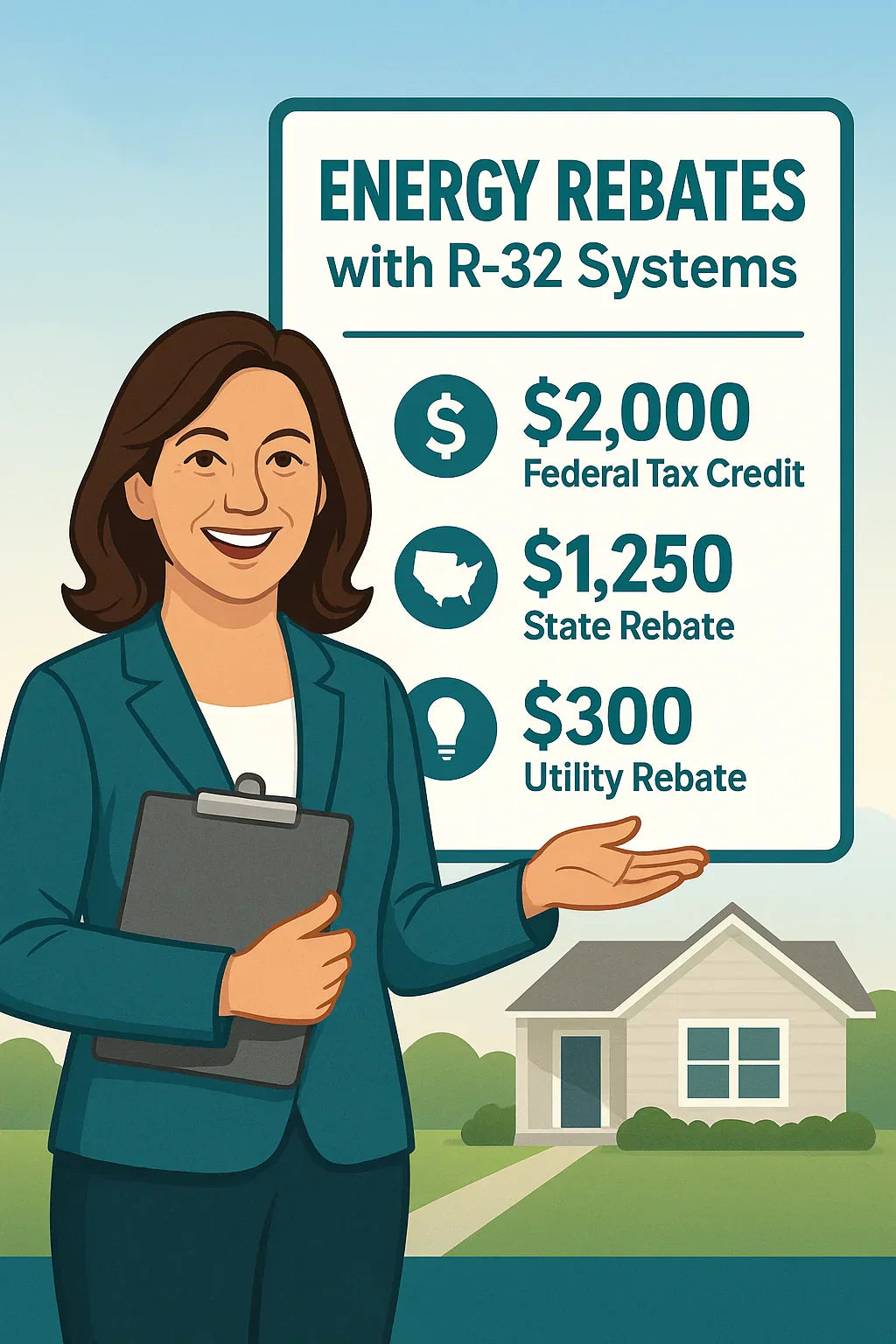If you're planning to install or upgrade to a high-efficiency HVAC system, now is one of the best times to act — especially if you're choosing a system that uses R-32 refrigerant. Thanks to federal tax credits, state-level energy incentives, and utility company rebates, homeowners can potentially save thousands by choosing R-32-equipped, ENERGY STAR®-qualified systems.
This guide walks you through how R-32 improves your eligibility, what rebates to look for, and how to maximize your savings in 2025 and beyond.
✅ Why R-32 Helps You Qualify for Incentives
R-32 is a newer refrigerant with a Global Warming Potential (GWP) of just 675, compared to R-410A’s 2,088. It's widely used in systems that meet or exceed the latest SEER2 and HSPF2 standards required for rebate eligibility.
These systems are:
-
More energy-efficient
-
Environmentally friendly
-
Often ENERGY STAR certified
This certification is the key that unlocks many available rebates.
🧾 Federal Tax Credits: 25C Energy Efficient Home Improvement Credit
Under the Inflation Reduction Act (IRA), you can claim up to $2,000 per year for eligible HVAC upgrades.
To qualify:
-
Your R-32 system must meet ENERGY STAR requirements
-
It must have a SEER2 of ≥15.2 (AC) or ≥16 (heat pump)
-
Installation must be in your primary residence
What you’ll need:
-
Manufacturer Certification Statement
-
IRS Form 5695
-
Your installer’s invoice with model numbers
👉 IRS Form 5695 and Instructions
🏛️ State & Local Rebates
Many states offer additional incentives through energy agencies and public utility programs. Examples include:
-
California TECH Initiative: Up to $3,000 for heat pumps
-
Mass Save: $500–$10,000 rebates based on income
-
Efficiency Vermont: $400–$1,000 on ENERGY STAR AC or heat pumps
Check your zip code in national rebate databases to find what’s available to you.
👉 DSIRE – Database of State Incentives for Renewables & Efficiency
🔌 Utility Company Rebates
Local utility companies often provide cash-back offers for installing energy-efficient equipment.
Typical offers:
-
$100–$500 for high-SEER2 heat pumps or central ACs
-
$50–$100 for smart thermostat pairing
-
Free energy audits before or after installation
Eligibility often requires:
-
Using a certified contractor
-
Submitting proof of ENERGY STAR or AHRI certification
-
Having the system verified via post-install inspection
📋 How to Claim Your Rebates and Credits
-
Check eligibility requirements BEFORE installation
-
Ask your HVAC contractor to supply model numbers and certification forms
-
File IRS Form 5695 for federal tax credits
-
Submit rebate applications to your utility or state program, usually within 30–90 days
-
Keep all paperwork, including contractor invoices and product labels
👉 AHRI Certificate Lookup Tool
🏠 Example Savings Scenario
Let’s say you install a 2.5-ton R-32 heat pump system with a SEER2 rating of 16.0:
-
Federal Tax Credit: $2,000
-
State Rebate (e.g., Mass Save): $1,250
-
Utility Rebate: $300
Total Possible Savings: $3,550
That’s a significant offset to a system installation that might cost $7,500–$9,000.
🧠 Samantha’s Tips for Maximizing Rebates
"Don’t wait until after the install to gather paperwork. Ask your installer for model certification forms up front. And look for rebates that stack — federal, state, and utility programs can all work together to save you more."
🔍 Final Takeaway: R-32 Is Good for the Planet and Your Wallet
R-32-based HVAC systems offer powerful cooling, lower environmental impact, and outstanding efficiency — all of which can qualify you for major incentives.
By choosing ENERGY STAR and SEER2-compliant models and working with a certified contractor, you can take advantage of every rebate and credit available.
👉 Start browsing rebate-eligible R-32 systems today at The Furnace Outlet
In the next topic we will kow more about: How R-32 Systems Support a Greener Future







